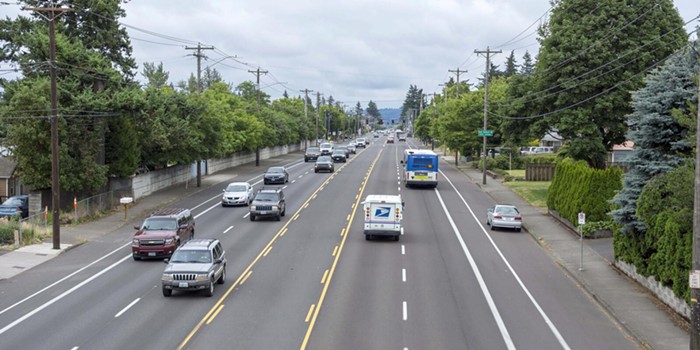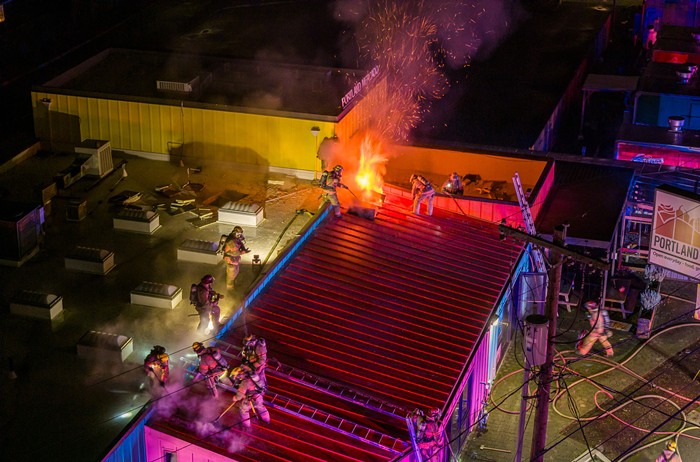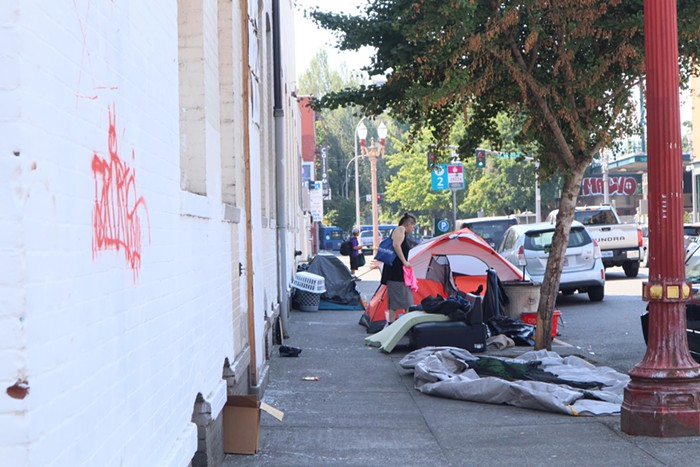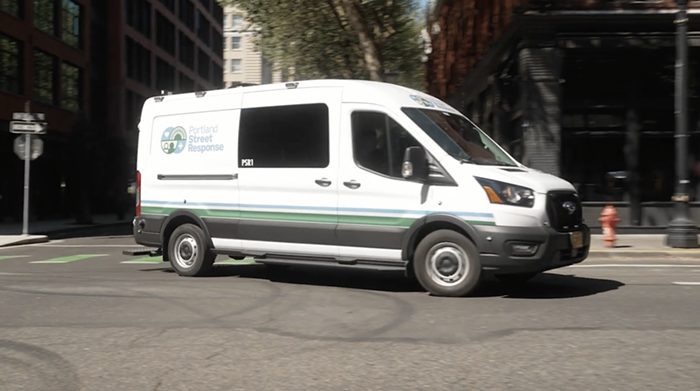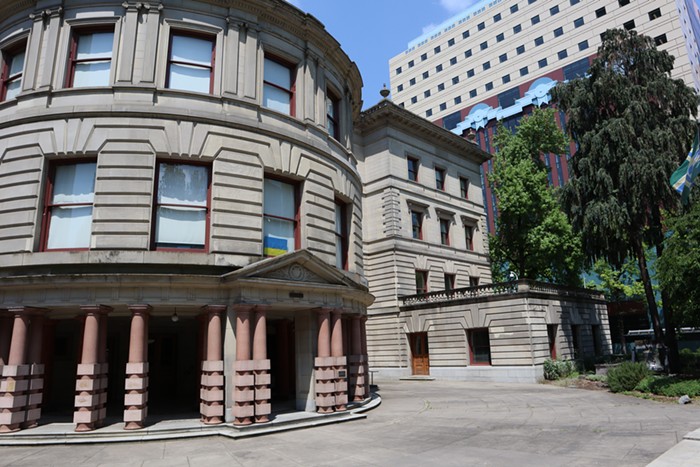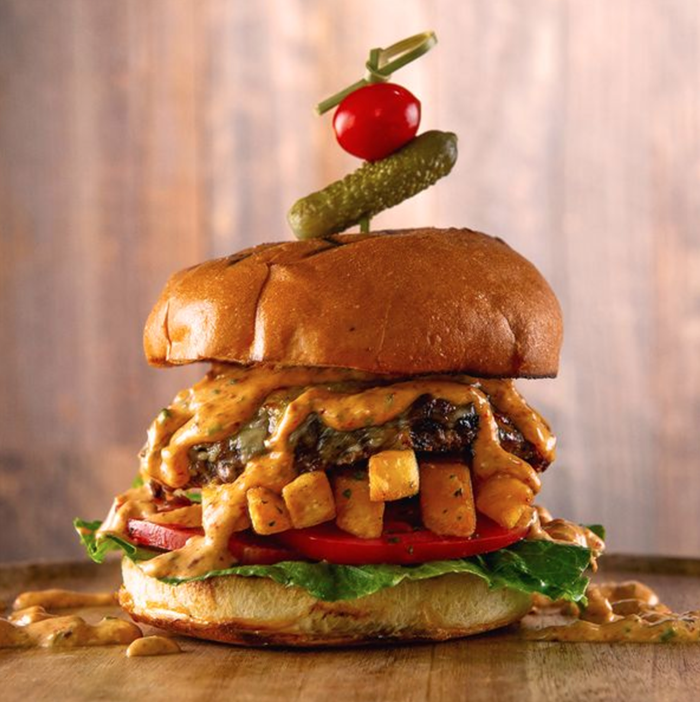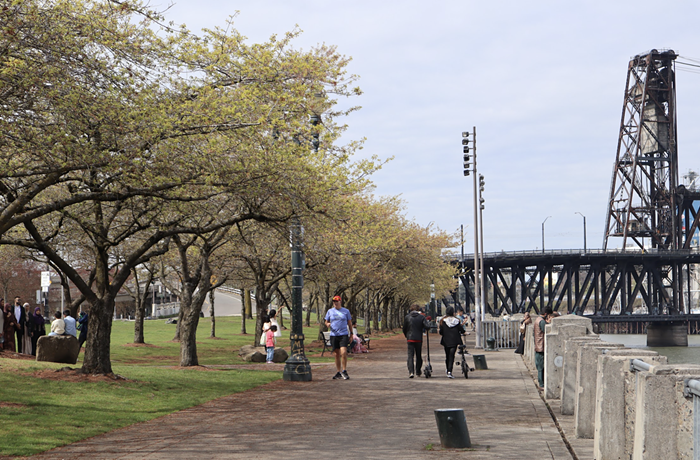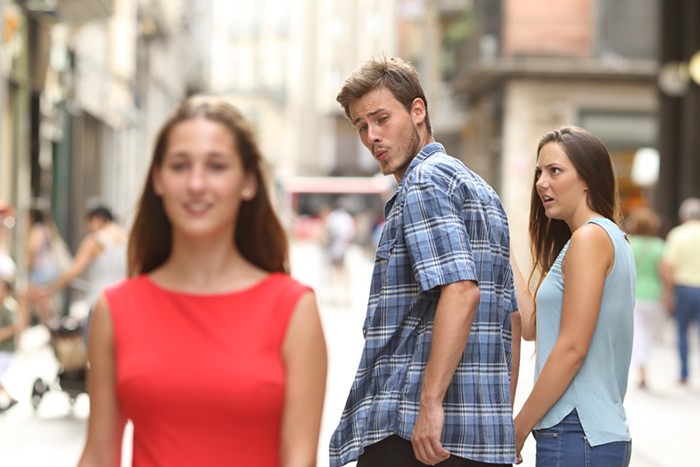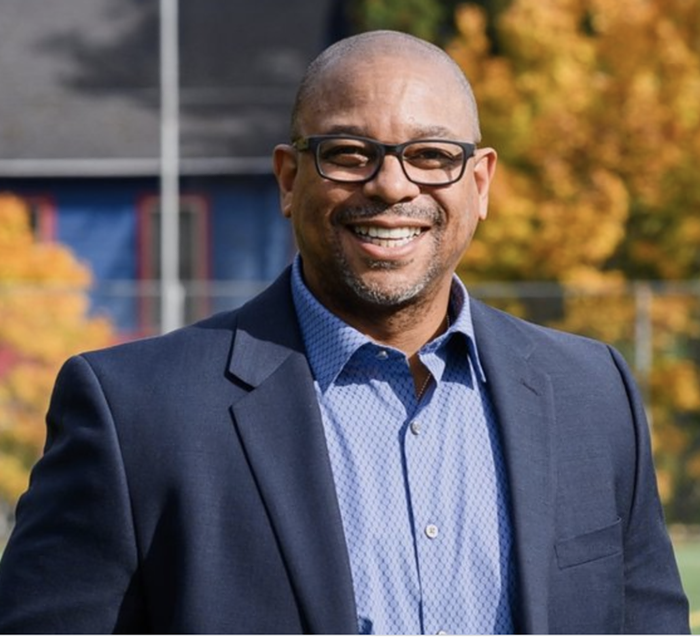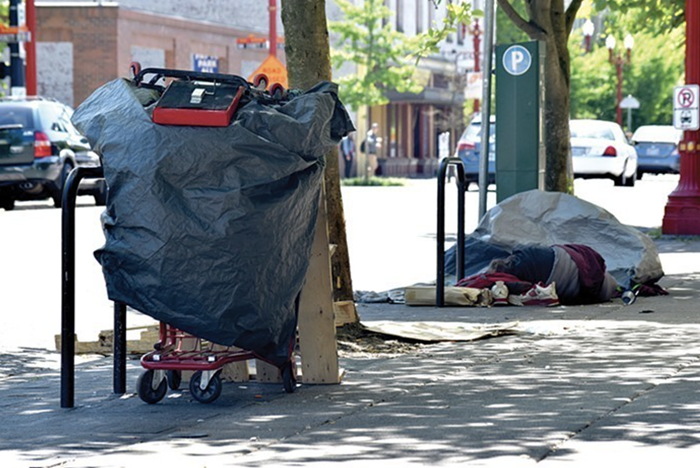HUNDREDS OF PROTESTERS swarmed Shemanski Park last Friday night, and Jimmy McRae stayed put.
McRae, good-natured and houseless, had been sitting alone on a bench in the empty park. Suddenly he found himself pressed on all sides by demonstrators infuriated by Donald Trump’s impending presidency. They held a moment of silence in remembrance of slain Missouri teen Michael Brown, then marched on, chanting, into the night.
What did McRae make of the sudden episode?
“It’s kind of nonsensical,” said the 52-year-old. “The man’s already got the electoral votes. It’s not going to change a damn thing.”
Plenty of Portlanders would no doubt agree. In the week since Trump’s devastating surprise victory, marchers have taken to the city’s streets nearly every day. Massive protests have stalled traffic, spurred tense standoffs with riot-gear-clad cops, and sent tear gas and flash bangs into the night air.
To date, more than 100 people have been arrested in the demonstrations, though the protests have been largely peaceful.
Still, after an ugly episode Thursday, when masked anarchists began widespread vandalism—smashing glass panes at bus stops, windshields at a Northeast Portland Toyota dealership, and businesses’ windows in the Pearl District—the city’s turmoil achieved national prominence. Even as marches played out in cities around the country, the Associated Press called Oregon the “epicenter” of anti-Trump angst, and Dave Chappelle mocked the “white riot.”
“News said they did $1 million worth of damage,” Chappelle said on Saturday Night Live, correctly quoting a very loose estimate from Police Chief Mike Marshman. “Every black person was watching that like, ‘amateurs.’”
To a person, demonstrators the Mercury spoke with in the last week acknowledged their actions won’t prevent Trump from taking the White House. Many spoke of an anger, fear, or helplessness they were hoping to ease by taking to the streets with likeminded people.
“It brings attention,” said a 23-year-old protester who’d only identify herself as “Emma,” and who had a bandana and gas mask draped around her neck. “It’s a symbolic act. It doesn’t do anything in and of itself.”
For another demonstrator, 26-year-old Timothy LaCroix, the protests were about delivering a message.
“It’s a way for us to show the world how unhappy we are with everything,” LaCroix said Friday night, sitting in the middle of Southwest Fourth Avenue as riot police and protesters faced off nearby. “All these different groups feel threatened and are fearful. We are all scared together.”
Clint Kuper, 37, came to a “heal-in” outside of City Hall on Friday with his wife and daughter, looking for answers.
“I’m just here to do something,” said Kuper. “I’m just so lost, and I don’t know what to do. I hope something truly tangible comes of this.”
That’s the lingering question from the city’s recent anguish: Can Portland harness this energy and activism into something more than nightly standoffs and furious commuters?
The people behind Portland’s Resistance think so.
The brand-new activist group was founded on a whim by local organizer Greg McKelvey, who created its Facebook page while protesting Trump on a bridge Wednesday night. But in the absence of any other organized response, Portland’s Resistance quickly became a go-to for people looking to express their dismay. It’s hosted two protest marches of its own, including the one that devolved into rioting on Thursday (after the group had ceded control of the march). Two of its other events—the Friday “heal-in” and a candlelight vigil on Sunday—have spun off into marches the police call illegal.
It’s not protest for protest’s sake, McKelvey and others insist. Instead, Portland’s Resistance is cannily hoping to put the city’s immense anti-Trump sentiment to work in pushing roughly two-dozen wide-ranging demands.
Some of those are cribbed from the racial justice and police reform goals of the group Don’t Shoot Portland, of which McKelvey has been a visible member. Others are far more broad, including rent control, “clean air and water,” school funding, LGBTQ inclusion, and pretty much any other progressive ideal you can think of.
McKelvey’s argued often in recent days that it’s Portland’s job to be a “shining beacon” to the rest of the country once Trump’s in office. And ideally, he wants to begin pursuing that change in ways beyond protest—not that his group plans to forgo marching.
“The politicians want to get us off the street, so it gives us more leverage—it gives us more energy,” McKelvey tells the Mercury. “But we do need legislative policy changes. You can’t protest every night.”
Mayor Charlie Hales and Police Chief Marshman agree. After four days of boisterous protest—including the aforementioned “riot,” and the repeat shutdown of the city’s interstates—a weary Hales called a Saturday afternoon press conference to plead with Portlanders to stop demonstrating.
“If you are upset about the election of Donald Trump and you want change, there are ways to do that,” Hales said. “They don’t involve taking to the streets with signs anymore.”
It was a stark contrast to his message at a press conference the day before, when he acknowledged the necessity of protest. And it foreshadowed a newly stringent attitude police took toward demonstrators: After a hands-off police presence on Wednesday and Thursday, and only 17 arrested during Friday’s tense march, cops cuffed 71 people on Saturday night.
“We are done with criminal activity in this city,” Marshman said at the press conference.
Perhaps, but the appetite for protest hasn’t diminished.
On Monday, several hundred local high school and middle school students walked out of class to march, chant, and wave signs through the streets. Like demonstrators in the days before, the students held up traffic, and even considered blocking the freeway.
Police stayed out of it, for the most part.
“If Trump does what he said he’s going to do during his campaign, then we’ll be set back 50 years for civil rights,” said “Eric,” an eighth grader at Hosford Middle School, who claimed to have ducked out through a “secret exit” to join the protest. His elderly grandma is here undocumented, he said, “so if [Trump] actually does deport everyone that’s not here legally, I’ll never see her again.”
Anna Jackson, a parent of an eighth grader at da Vinci Arts Middle School who joined the protest, was one of a handful of adults on hand.
“My daughter asked me if she could go because she didn’t want to get in trouble for skipping school,” Jackson said. “I said, ‘Yeah, go fight for your rights, you guys are the next voting generation.’
“Nearly every one of these kids will be voting for the next president and they have the right to be heard and they have a right to be mad.”
